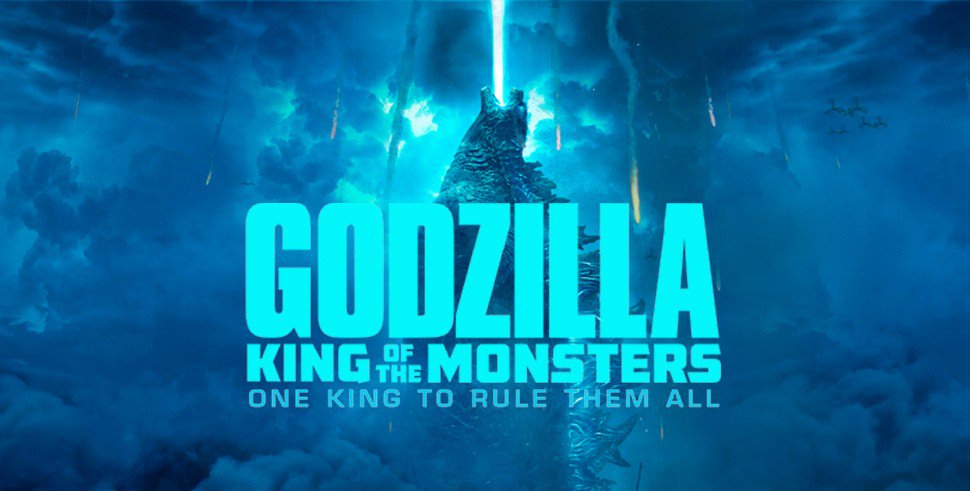Why Godzilla: King of the Monsters Feels Small
Co-writer & director Michael Dougherty’s 2019 Godzilla: King of the Monsters is justifiably receiving a lot of criticism for its weak, illogical, and contradictory human drama narrative. At the same time, the film receives a lot of praise for its supposed extensive monster battle action. With the caveat that I’ve only watched Godzilla: King of the Monsters once, I think the film is actually weaker than even a lot of its criticism recognizes. Flaws in the human characterizations including an otherwise intelligent character who absolutely takes a slippery slope logical fallacy at face value, a character who essentially functions as a Marty Stu, a male version of the “Mary Sue” trope, and a supporting character that essentially vanishes from the narrative in the final act (I mean the Sam Coleman character, not the Jonah Alan character) have already been widely and extensively critiqued and discussed by other reviewers and critics. An entirely separate aspect of the film that hasn’t been addressed, however, is the film’s cinematography weakening the traditional viewer identification within the film.
Particularly the 1954 Godzilla and its 1955 sequel, along with the three 2018-2019 Godzilla anime movies, are exceptions within the 35 film franchise because they’re thematically closer to horror films than tokusatsu kaiju movies, closer in tone to speculative science-fiction cautionary tales than popcorn entertainment monster mash visual spectacle movies. The franchise’s third picture, 1962’s King Kong vs. Godzilla, is the first film to establish the better known and more typical perspective of giant monsters wreaking havoc rather than humans suffering the consequences of their own poor judgement and decisions. Practically speaking, every Godzilla film since 1962 has subtly encouraged viewer identification with the monsters. Practically speaking, every Godzilla film since 1962 has extensively incorporated camera shots at monster head level, emulating the perspective of the giant monsters. 2019’s King of the Monsters, however, does not include such shots. Virtually all shots of the monsters in 2019’s Godzilla are framed either from a human perspective looking up at the giant, towering monsters, or from a bird’s eye or helicopter perspective looking down at the monsters. The only shots in the film at eye-level with the monsters occur when humans happen to be at eye-level with the monsters, and those shots are strictly from a human perspective, not from the monster’s perspective. So, in effect, Godzilla: King of the Monsters removes the viewers’ ability to identify with the monsters, thus robbing the monsters of their most compelling chemistry.
When we, as children of any age, play with Godzilla figures, we don’t collect and play with action figures of human beings. We collect and play with figures of giant monsters. When we play with Godzilla toys, we don’t envision ourselves dying helpless, tragic deaths underfoot giant monsters or crumbling rubble. We embody the monsters. The fun of Godzilla is the embodiment of imaging the power and majesty of gargantuan beings destroying wantonly with ferocious abandon. We vouyeristcally identify with the monsters, the protagonists and even heroes of the movies, not the puny, powerless humans trampled underfoot. The Toho Godzilla movies recognize and gratify that viewer immersion. Camera shots from the monsters’ perspectives allow viewers to feel what the monsters feel, allow viewers to feel gigantic and powerful. The absence of such shots undermines the 2019 film in two ways. Rodan and Mothra actually come across more impressively in the 2019 film than either Godzilla or Ghidorah do because the film gives these two monsters clear, unobstructed, focused shots of these monsters kicking ass. The film includes memorable shots of Rodan performing a barrel roll, of catching a plane in its claws. Mothra gets a scene devoted to just her performing a victory earning attack. Godzilla and Ghidorah, though, don’t ever get such deliberate and gratifying scenes. Godzilla inflicts severe damage to Ghidorah during their first battle, but the damage is only shown in a brief cutaway seen from a human perspective. It’s not depicted as a victory for Godzilla; it’s depicted as just something that happened during Godzilla’s fight with Ghidorah. So it doesn’t have the rewarding, rousing impact on viewers that it should have. Later in the film Godzilla’s shoulder tackle of Ghidorah should be another highlight of the film, but the scene doesn’t have nearly the weight and impact it should because it’s brief, and viewers don’t feel it. Viewers don’t feel it because we don’t get to see it from Godzilla’s perspective.
In summation, Dougherty’s film feels as though it wants to honor and even continue the tone of Gareth Edwards’ 2014 movie by depicting Godzilla as an opaque force of nature that humans are subject to. “It’s Godzilla’s world. We just live in it.” But at the same time the movie clearly wants to be a monster rumble popcorn picture, a spectacle disaster movie in the vein of Irwin Allen and Roland Emmerich rather than a somber and chilling cautionary tale in the vein of Ishiro Honda and Gareth Edwards. While Hideaki Anno’s 2016 Shin Godzilla arguably did manage to straddle the line between criticism of human foolishness and effects heavy pageantry, Godzilla: King of Monsters doesn’t seem conscious of such an aim and thus doesn’t successfully manage to excel at either thematic approach. The movie doesn’t inspire concern or consideration for the human characters, nor does it let viewers leave the theater inspired by the awesome might of the monsters. It simply throws a lot of sound and fury on screen, but much too little of that spectacle transmits into viewer’s imagination.
To provide illustration, all of these snapshots from the Godzilla: King of Monsters trailer are shots from human ground level perspective looking up.


















